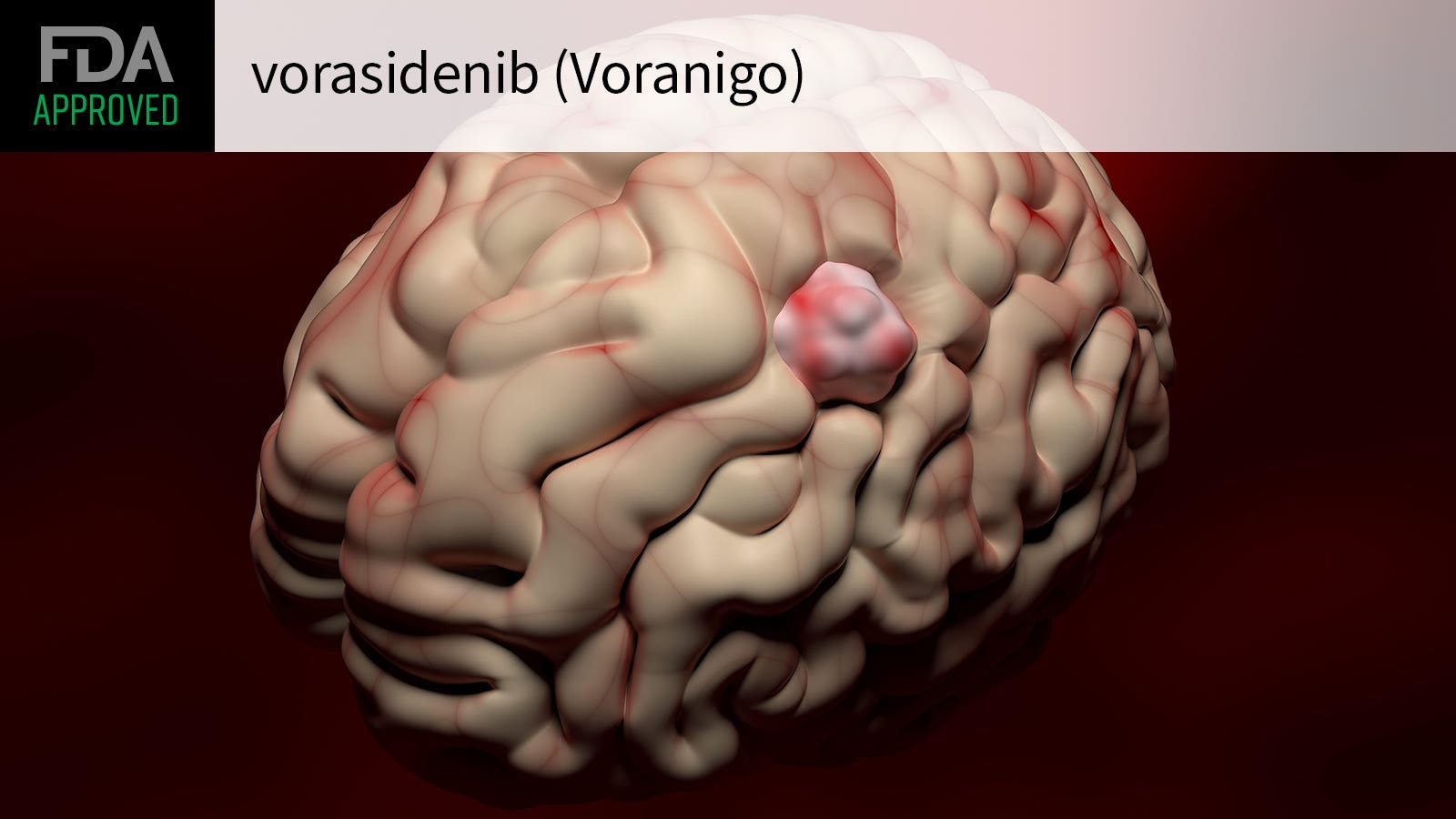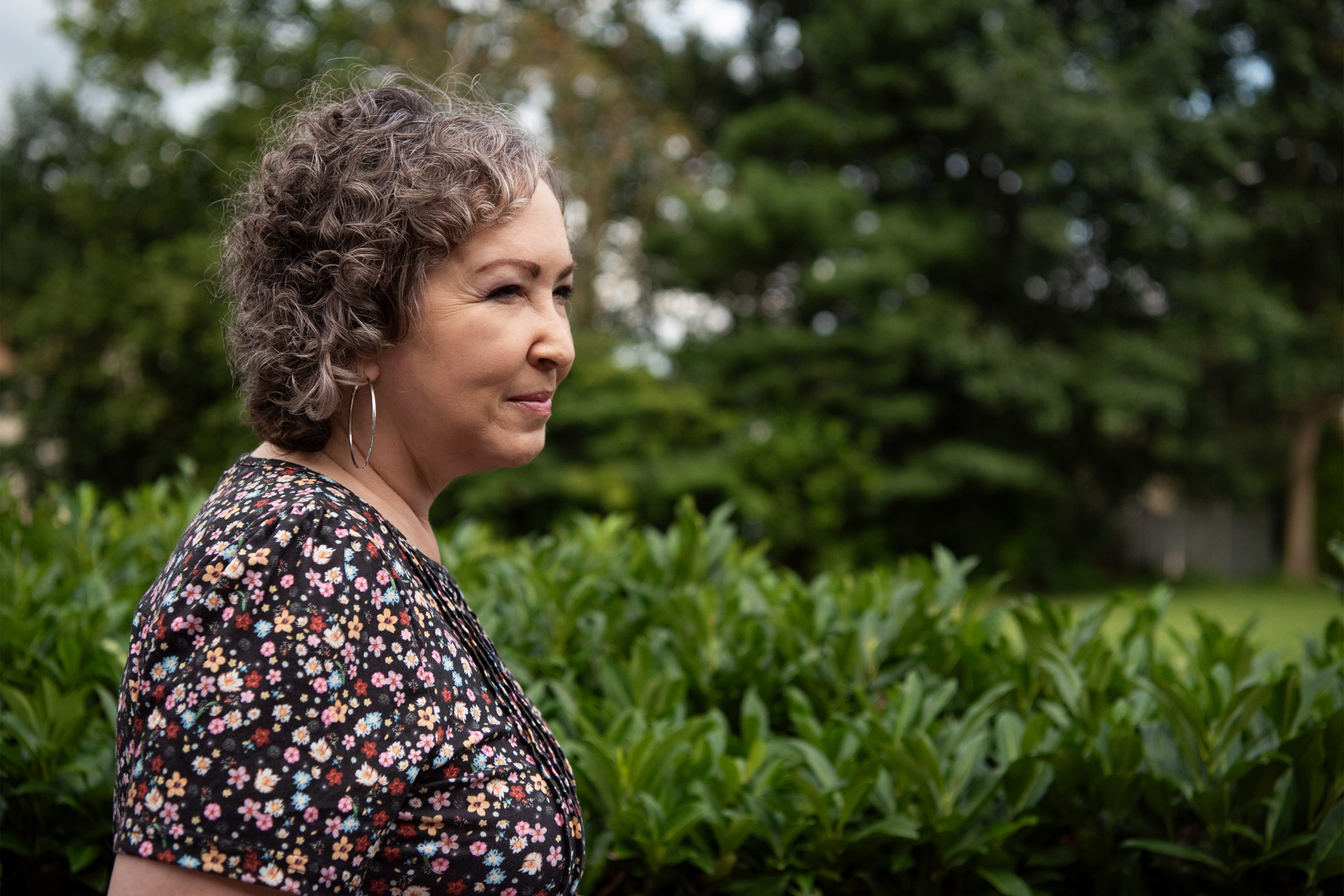The FDA approved vorasidenib (Voranigo) for patients 12 years and older with grade 2 astrocytoma or oligodendroglioma with a susceptible IDH1 or IDH2 mutation.
The drug — an IDH1 and IDH2 inhibitor — is the first systemic therapy approved for this patient population and can be administered following surgery (either biopsy, sub-total resection, or gross total resection).
Approval was based on data from the phase III INDIGO trial, which showed that patients treated with vorasidenib experienced an improvement in progression-free survival (PFS) of more than 16 months versus patients on placebo (27.7 months vs 11.1 months; HR 0.39, 95{e60f258f32f4d0090826105a8a8e4487cca35cebb3251bd7e4de0ff6f7e40497} CI 0.27-0.56, P<0.0001).
In addition, the median time to next intervention was not reached for the vorasidenib arm and was 17.8 months for the placebo arm (HR 0.26, 95{e60f258f32f4d0090826105a8a8e4487cca35cebb3251bd7e4de0ff6f7e40497} CI 0.15-0.43, P<0.001).
Vorasidenib “has the potential to change the landscape in this disease,” said investigator Ingo Mellinghoff, MD, of Memorial Sloan Kettering Cancer Center in New York City, when the INDIGO findings were presented earlier this year at the American Society of Clinical Oncology annual meeting.
Glenn Lesser, MD, of Wake Forest Baptist Health in Winston-Salem, North Carolina, who was not involved in the study, said at the time that treatment with the IDH1/IDH2 inhibitor could potentially delay the use of toxic chemotherapy and radiation for years, “and as a result delay long-term toxicities of those therapies in a group of patients who are typically experiencing long-term survival.”
INDIGO included 331 patients with grade 2 astrocytoma or oligodendroglioma with a susceptible IDH1 or IDH2 mutation who were randomly assigned to either oral vorasidenib 40 mg once daily or placebo in 28-day cycles.
IDH1 or IDH2 mutation status was prospectively determined by the Life Technologies Corporation Oncomine Dx Target Test, and patients randomized to placebo were allowed to cross over to vorasidenib after documented radiographic disease progression.
Patients who received prior anti-cancer treatment, including chemotherapy or radiation therapy, were excluded from the trial.
The most common adverse reactions included fatigue, headache, COVID-19 infection, musculoskeletal pain, diarrhea, nausea, and seizure. The most common grade 3 or 4 laboratory abnormalities were increased alanine aminotransferase, increased aspartate aminotransferase, increased gamma-glutamyl transpeptidase, and decreased neutrophils.
The recommended vorasidenib dose in adult patients is 40 mg orally once daily until disease progression or unacceptable toxicity. The recommended dose in pediatric patients is based on body weight: 40 mg orally once daily for patients weighing ≥40 kg, and 20 mg orally once daily for those weighing <40 kg.




